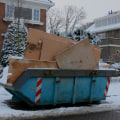Logging is the process of cutting down trees, an element of the logging task. The person who cuts down the trees is a feller. A feller buncher is a machine capable of cutting down a single large tree or grouping and cutting down several small ones simultaneously. In manual felling, an ax, saw or chainsaw is used to cut down a tree, followed by brushcutter and cutting in traditional applications.
In the modern commercial timber industry, logging is often followed by delimbing and trawling. The process of cutting a tree into usable lengths is called cutting. Bulging often occurs as a tree is being cut, such as when the branches of the crown are to be used as firewood. When cutting firewood, make sure you know the length of wood needed before you leave home.
When cutting full-size products, such as sawing logs and sheet metal logs, you need to cut logs longer than the final product to leave a trimming allowance. For an 8-foot log, a trimming margin of 4 to 6 inches is common. Many cutting cuts are inclined, and the trimming allowance allows the ends of the boards to be cut squarely on the cutter to the desired board lengths. Directional felling is a specific tree cutting technique in which the operator determines the direction of fall before cutting. Wherever possible, trees should be cut down in the direction of existing canopy gaps to reduce damage to nearby standing wood.
In general, trees should be felled towards or away from the skating rinks, preferably at an oblique angle to the sliding direction. Felling away from the slide path will reduce problems for the extraction team when the treetops are large, while felling to the slide path can reduce the extraction distance substantially.
Felling trees
in a forest is called deforestation. Deforestation occurs when a large number of trees are cut down with the intention of not. Essentially, cutting down trees is the action of cutting down a tree to prevent the spread of disease and improve safety in the area. If not carried out properly, tree felling can be very dangerous; as such, this type of work should be done by a tree care specialist who will plan the task meticulously, taking into account any potential hazards or risks.If the tree has lodged or embedded in adjacent trees and has not fallen to the ground, do not walk under the tree. The tree will collapse before the saw cut completely, and how it falls will depend largely on the hinge. In this system, the typical cutting cycle varies from 10 to 20 years and the harvest intensity is approximately 20% (or one-fifth) of the volume of the standing tree (Grassi et al.). Make sure the rope is long enough that whoever is pulling doesn't end up under the tree, or place the rope around a tree in front of where you want your tree to fall, so your helper can pull from the side at a 90-degree angle. A thorough evaluation of the tree will determine which course of care is required for any problem to be solved in the right way. The forestry plan estimated a total volume of wood of 26,814 m3 (947,070 feet of pine (13.1 m3 per ha (187 ft3 per ac)) and 11,107 m3 (392,299 feet of oak (5.4 m3 per ha (77 ft3 per ac)), a rotation of 50 years plus a final “liberation” period of 10 years after which the trees seeds were removed. The MMOBI silvicultural method maintains existing irregular forest structures by removing individual trees or groups of trees.
The MDS is based on the retention of seed trees, which remain after the final harvest to produce natural regeneration. If the tree needs to be removed and you suspect that logging will affect a power line, call the power company. Periodically place the saw and remove debris so that you have a clear view and movement around the tree. Pay close attention to the top of the tree; if it nods in one direction when the wind blows, this will influence how the tree will fall. Tree regeneration was compared in the southern Rocky Mountains between paired and untreated harvested stands of thrush pine that had suffered more than 70% mortality due to D. The felling season may influence regrowth and, although there is some variation between species, it has generally been found that stem survival and initial number and growth of new shoots (Figure) are usually better when trees are cut during dormant season.
If there are power lines near the tree, do not attempt to cut down unless you are absolutely sure that doing so will not interfere with them...



